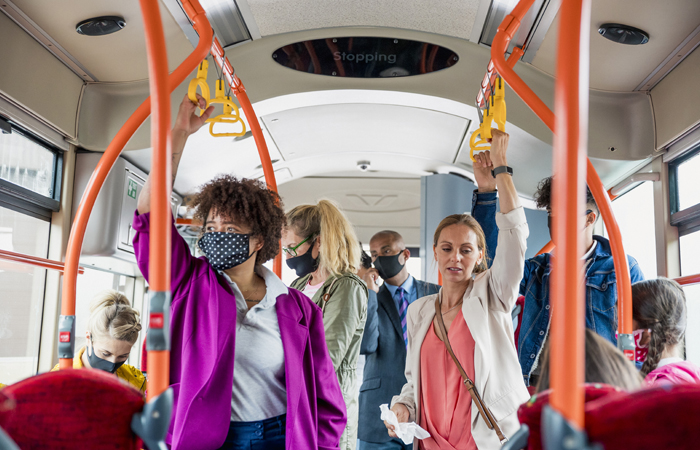Face coverings
In Clinical
Follow this topic
Bookmark
Record learning outcomes
Medicines counter assistant Shefali rushes into the dispensary and slams a prescription down on the dispensing bench.
“I’m so fed up of all the ridiculous reasons people give for not wearing a face covering,” she complains. “We have been here through all the restrictions and lockdowns, yet so many people don’t bother doing something so simple that will protect us from them and mean we can keep going.”
“I know, I understand your frustrations Shefali, it is really tough working in pharmacy at the moment,” empathises Vicky. “But, you know, there are some specific exemptions, and they aren’t always obvious…”

Answer
The wearing of face coverings is required by law in certain situations across the UK. The specifics vary slightly across the four home nations, but broadly the requirement applies to the majority of public indoor settings, and in places where physical distancing from people outside the individual’s household or social bubble cannot be maintained.
However, some groups are exempt:
- Children under the age of 11 years in England and Wales, under the age of five years in Scotland and under the age of 13 years in Northern Ireland
- Anyone who cannot put on, wear or remove a face covering because of a health condition or disability or because it would cause severe distress
- When speaking to or assisting someone who relies on lip reading, or similar, to communicate.
There are also situations in which it is considered reasonable to remove a face covering temporarily, including:
- For identification purposes
- When eating, drinking or exercising strenuously.
The above is not exhaustive, and detailed guidance has been issued by each Government, but, in general, a common sense approach is needed. For example, an individual who is alerting someone to a threat does not need to don a face covering before speaking, and while someone with diabetes who needs to eat to stave off a hypoglycaemic attack is acceptable, this is the exception rather than the norm. Mild discomfort, glasses steaming up, and not wanting to wear a face covering are not regarded as reasonable.
Nobody is expected to have to prove an exemption, but some organisations have created cards that can be shown if this makes the individual feel more comfortable. Courtesy is also required in terms of helping others who may struggle to understand someone who is wearing a face covering. Measures include being patient, reducing background noise, speaking slowly, using gestures and removing the face covering while remaining at least two metres away.
The bigger picture
A face covering is not personal protective equipment (PPE), which is why the term “mask” is not usually used within this context. Instead, a face covering is regarded as something that safely covers the nose and mouth, which are the main sources of Covid-19 transmission, and protect others rather than the wearer. Face shields (visors) do not offer the same level of protection.
Both single-use (disposable) and reusable face coverings are available, and there is a move towards the latter due to the environmental impact of single use items. There are no UK standards for face coverings. However, the British Retail Consortium (BRC) has released specifications for disposable and reusable items with relate to the design, labelling, chemical and performance requirements, though not filtration efficiency. There is also a European reference document for anyone looking to make face coverings, both for mass production and domestically.
The home production of face coverings is eminently possible, with instructions available online for all levels of competence. Emerging evidence suggests that the risk of transmission may be reduced if thicker fabric or multiple layers are used, but it is important to ensure the face covering is breathable and comfortable. Children’s items should have ear loops rather than ties. Scarves, bandanas and similar garments are also suitable, as long as they fit snugly around the face, and hygiene measures, such as cleaning hands, not touching the section in contact with the mouth or nose and changing the covering if it becomes damp or is touched, are all adhered to.
Extend your learning
• Read what the World Health Organization has to say about the use of face coverings
• Have a look at the guidance from the English, Welsh, Scottish and Northern Irish governments
• Some of the places where exemption cards can be downloaded include the British Lung Foundation, the Welsh and English governments
• Exemption cards can also be ordered from the Scottish Government or purchased from Hidden Disabilities
• The European reference document on face covering production can be accessed via AFNOR and specifications are available from the BRC
• Advice on making face coverings is accessible via the BBC, along with a no-nonsense usage guide and advice on how to stop glasses steaming up.
